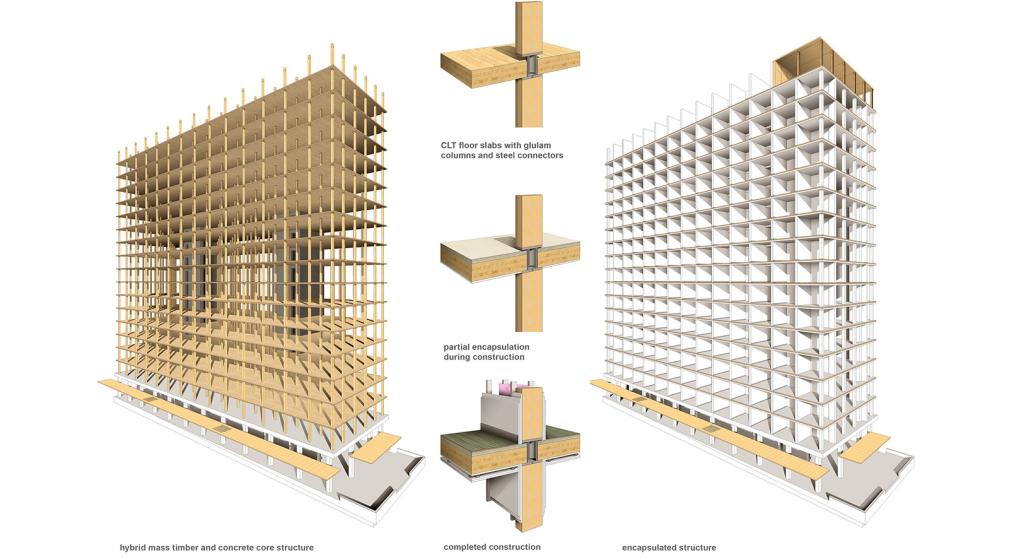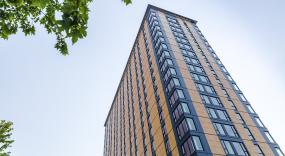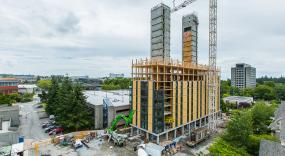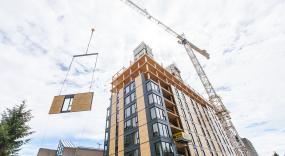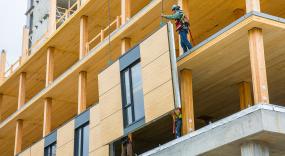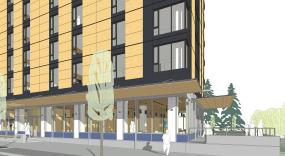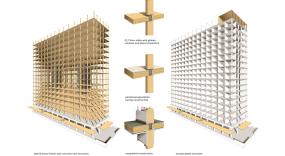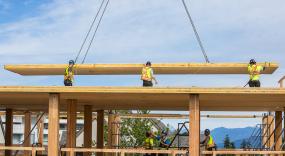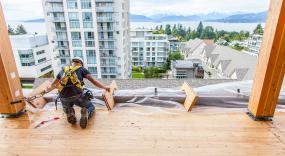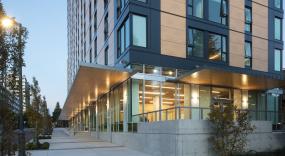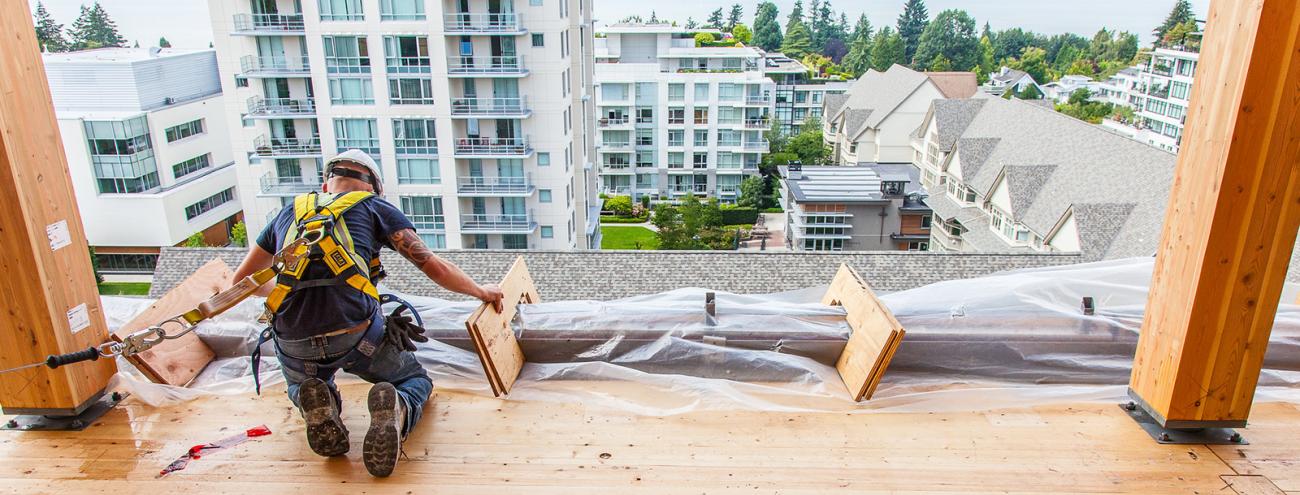
Brock Commons Tallwood House
UBC’s Brock Commons Tallwood House is one of a growing number of mass-timber buildings around the world. Our Tallwood House takes advantage of new engineered wood products and construction techniques to showcase more sustainable building practices.
The newest addition to UBC’s sustainable building portfolio, Brock Commons Tallwood House was developed as part of the Tall Wood Building Demonstration Initiative launched in 2013 by National Resources Canada and Canadian Wood Council to showcase wood-based solutions for high-rise buildings and build industry capabilities in Canada.
In addition to providing much-needed housing for students, the building also aligns with UBC’s Campus as a Living Lab initiative, as a demonstration of innovation and an opportunity for research and learning.
Innovations in construction
The first building of what will become the Brock Commons complex, one of UBC’s mixed-use residential hubs, Tallwood House provides accommodation for more than 400 students as well as study and amenity spaces.
The hybrid structure of the building is composed of:
- Prefabricated cross-laminated timber (CLT) floor panels, supported on glue-laminated timber (GLT) and parallel strand lumber (PSL) columns;
- Cast-in-place concrete foundations, ground floor, and elevator/stair cores;
- Steel connections and roof structure.
- To achieve code compliance a unique site-specific regulation (SSR), UBC Tall Wood Building Regulation was developed, and the proposed structure and fire safety solutions were reviewed by local and international experts.
The intention of the SSR is to ensure that the occupant health and safety protections are stringent, and it included measures such as the encapsulation of the mass timber elements in gypsum board to achieve the required fire resistance rating and a sprinkler system with an on-site backup water tank and fire pump.
Take a 360 video tour
An interactive video tour that provides a guided walk around the building. Explore multiple floors, and learn about the innovative construction materials and assembly process. A narrated guide with close captioning available.
Sustainable lifecycle features
There are numerous environmental benefits of building with mass timber:
- Renewable and regional available resource
- Carbon sequestration
- Smaller carbon footprint than steel and concrete
- Lighter structure requiring a smaller foundation and therefore fewer materials
- Prefabrication capabilities, faster installation and reduced construction waste
- De-constructability, reuse and recycling potential
All mass timber elements in this building were fabricated in BC from regional forestry products supporting the local industry. In addition, Tallwood House will be LEED v4 Gold certified.
A valuable research and education opportunity
Tallwood House provides a unique opportunity to study mass timber design and construction in a tall wood building. A research collaboration between UBC’s Sustainability Initiative and faculty members in Forestry and Civil Engineering has been studying the design, manufacturing, construction, commissioning and operation processes and document the challenges, solutions and lessons learned.
Morning forward, sensors embedded within the mass-timber elements will enable researchers to study the long-term performance of the structure.
The experiences and lessons learned from Tallwood House contribute to a growing body of knowledge of mass timber and tall wood projects that can inform future research, building projects, policies and regulations.
Resources
Partners
Infrastructure and Development, UBC Facilities
is responsible for the planning, development, renewal and renovation of campus facilities and infrastructure. They provide stewardship for all institutional facilities projects.
Energy & Water Services
generates, distributes and conserves UBC’s energy and water resources by maintaining environmental comfort, ensures system reliability, minimizes life cycle cost, reduces GHG emissions, and seeks out innovative solutions.





